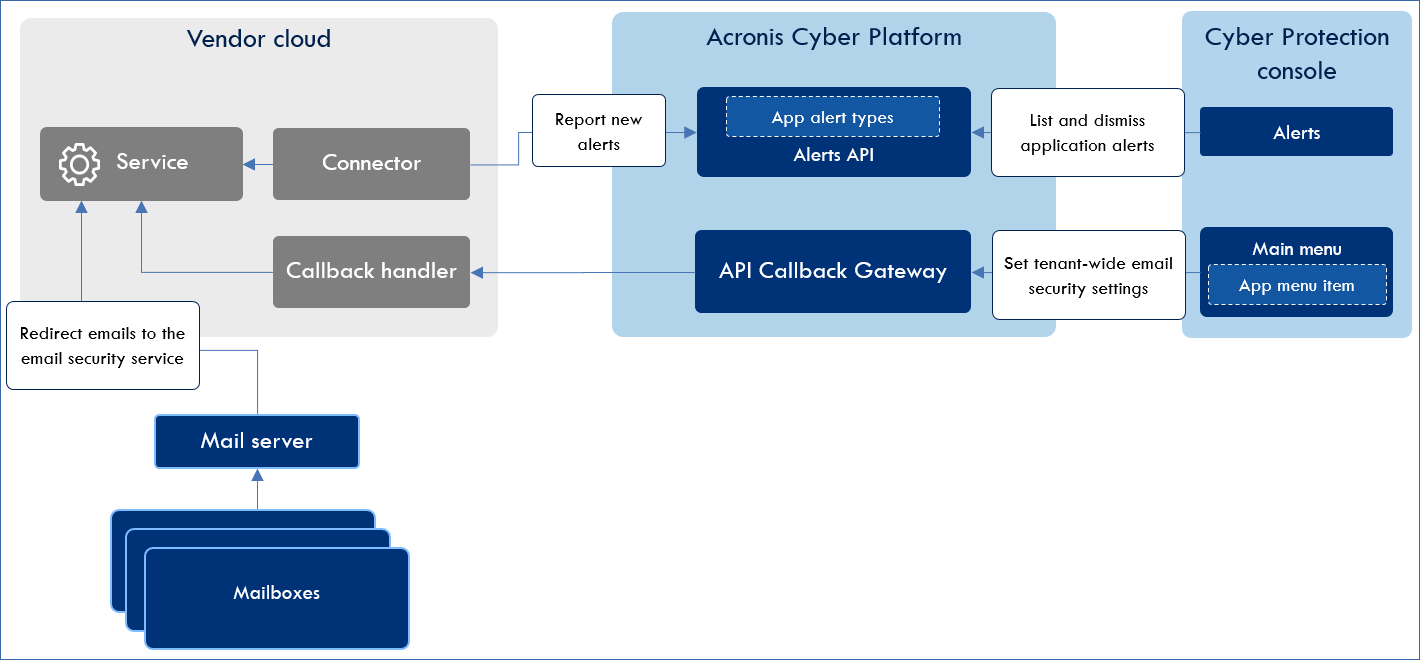Email security

Recommended extension points
To be able to extend Acronis Cyber Platform with email security capabilities, the following extension points should be used.
CyberApp enablement form
CyberApp enablement form, to enable the CyberApp, provide credentials for accessing the ISV service, and map ISV customers to Acronis customers.
Email security is performed at the customer-level. This means that the Acronis Partner needs to enable the CyberApp for each end customer individually. Typically, email security CyberApps contain the following settings:
CyberApp configuration and mapping can be done only by the Acronis Partner. It cannot be done by end customers.
Alerts
Alerts, to display alerts and events generated by the ISV service.
Threat name.
Action executed upon the threat detection.
MD5, SHA1, SHA256 checksums of the detected object.
General email information (sender, subject, received date, etc.).
Email account.
Widgets and reports
Widget and reports, to display email security status.
An historical diagram of email scanning alerts.
List of top 5 mailboxes with the most number of alerts.
List of 5 latest alerts generated by the email security Cyberapp.
These widgets should be declared by the CyberApp. The widget data must be based only on alerts or workload attributes submitted by the CyberApp.
It is recommended to add CyberApp-specific widgets to the Overview dashboard in Acronis Cyber Protection Console and in the Detected Threats report. Additionally, the application may register a new custom report on email security with all the widgets created by the CyberApp.